What is an author platform and why do you need one?
Writer’s Digest defines an author platform as the “personal ability to sell books through: who you are, the personal and professional connections you have, and any media outlets (including blogs and social networks) that you can utilize to sell books.” In short, it is the way authors get their books sold.
But why is an author platform so important if your manuscript hasn’t even been published yet? That is because your author platform is the key to gaining your prospective readers and grabbing the attention of literary agents and publishers. Your manuscript is only one piece of this giant pie that agents and publishers look at before deciding to sign with you. Your online presence matters.
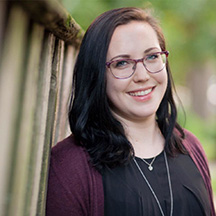
“Publishing houses often look to authors’ social media followers to judge the potential for their book to sell. While a great book idea and a talented writer is still key to getting a book published, having a robust social media following always helps. It shows that the authors already have an audience of fans that would definitely buy their book, securing the idea that it could be profitable for a publishing company,” shares Cassie Drumm, associate digital marketing manager at Running Press.
Building your author platform is not as scary as it sounds. It is also not as complex. Sure, there are a number of bells and whistles that go along with creating the platform that is going to help sell your book, but all the pieces end up fitting together like that of a puzzle. And before you know it, you are staring at an effective online presence made specifically for you.
Part One: Targeting the Right Audience
How to target the right audience
Having an author platform before you are published won’t mean anything if you aren’t reaching out to the right people. Now, what defines “the right people?” The right people are the people who would be interested in reading your book-to-be. If your manuscript is about witches and souls, then you want to build your audience with fans of fantasy books and more specifically, readers interested in books with witches.
How do you find the people who would like to read your book-to-be?
Start reading books in the same genre as yours. Do any of them have a similar storyline or some of the same elements? Make sure to take note. By knowing these books on hand, you will be able do some research. Goodreads is a good tool to use to see who has read and liked the books you noted. These are the future readers you want to target for your platform. It could be as simple as sending them a message saying “hello” or even a connection request. The end goal, though, should be to convert them to your platform. Just make sure that your efforts are genuine and not spammy, and you are sure to build up the right audience for your platform. And remember, quantity doesn’t matter as much as quality. You want to build an audience that is actually interested in your book-to-be.
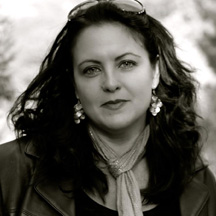
Suzanne Palmieri is a good example of an author who built a platform targeting the “right audience.” I met Suzanne for the first time at the Philadelphia Writers Conference a couple of years back. She was teaching one of the writing workshops. Afterwards, I inquired about her book and writing in general. She was very friendly and helpful; so much, that by the end of the weekend, she had gathered a number of conference attendees who she started calling, “The Lost Witch Coven” after her book The Witch of Little Italy. She signed the books we bought and informed us about her website and how to follow her on social media. I use her as a good example of targeting the right audience because she paid attention to people who were interested. She made sure to connect and then convert us into readers.
Part Two: Branding Yourself
There is power behind branding yourself
Look at Jen Sincero, author of You Are a Badass. The one thing that her books have in common is the big font quotes that paint the pages. If you have read any of her books before, and you saw that font used for a quote anywhere else, you would automatically associate it with her. When I was creating her publicity campaign for You Are a Badass, I used the quotes on social media and even in articles to tie everything back to her book. This is the power of consistency and branding.
When we discuss building an author platform, branding is a huge part of it. And what that really means is just being consistent in the design and content that is being put out there. Taglines are a great way to brand yourself. You can associate it to your website, social media, and even in your book. Look at yourself as an ad. You want people to remember you; and until your book is published, you need to give them something to associate you with.
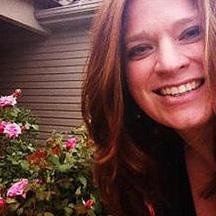
Liz Schulte, who is a full-time writer of mystery, paranormal romance, and urban fantasy, has built a brand around her multiple book series. She is very generous when speaking at writing conferences and shares a lot with her readers and fans on social media. Here’s her advice about building a brand: “If I could give advice to authors who are currently building their brand, I would say to get to know your audience and to be authentic. Knowing and understanding your audience will help you determine where, when, and how to advertise your books.”
Here are some steps on how to brand yourself.
- Design or get someone to design a logo for you. It doesn’t have to be anything too fancy just a simple design that includes your name.
- Put your logo on your website, social media platforms, email signature, and even your book-to-be.
- Order promotional material with your logo on it and platform URLs. This could be a business card, t-shirt, sticker, etc.
- Come up with one to two sentences about what you do and what your book is about. This is your tagline. You will want to put this on your website, social media channels, and promotional materials along with your logo. This is also what you will be explaining to the people you meet in person when forming connections.
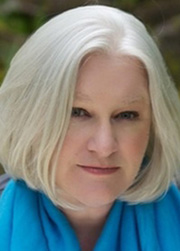
Sabrina York, New York Times bestselling author and RITA-nominated romance author, believes that your brand and marketing message need to be service-oriented, not necessarily product-oriented. So this goes perfectly for writers who don’t have a book yet. She says, “Your marketing messages emphasize the service provided—the adventure of the story, the emotional ride, the thrill of the journey—rather than simply ‘my book.’ It answers the WIIFM-question readers have: What’s in it for me? The answer, of course, is ‘A Rocking Experience You Cannot Miss!’”
Part Three: Social Media—Focus on One
Using social media
Social media has grown an intense amount of dominance over the internet in the past decade. What was once just a fun little way to spend time grew into a giant conundrum of power. Social media has now gotten to the point where it impacts how people think about the world, life, and even themselves.
It is also a huge way to build your author platform. With social media, you are able to introduce a new thought to people, and that thought is going to be about your book-to-be.
Cassie explains, “There are so many different ways that social media can affect the life cycle of a book. It can help with boosting an author’s initial platform during pitches, building awareness of a new book coming out, helping with word-of-mouth marketing, acting as a platform for book announcements from publishing houses, housing discussions directly between authors and readers, communicating sales and author appearances, and more.”
The most popular social media channels for authors include Twitter, Facebook, and Instagram, but you are going to want to choose the one that will fit best for you and your audience.
Focusing on a single social media platform
Putting all of your focus and energy into one thing ends up showing the most results, especially on the internet. That’s why when it comes to social media, it is usually more useful to focus all of your energy on one platform.
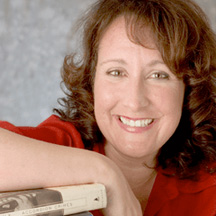
Penny Sansevieri, bestselling author and founder of Author Marketing Experts, explains, “Exposure is what sells books, and social media can feed into that exposure, most definitely. But it’s got to be the right kind of exposure, on the right platform and with some engagement. So, for example, if you’ve been on Facebook forever, and you get maybe one to two likes on a post, that’s not great engagement and not great exposure. So first is finding the right place to promote your book. And that might not be Facebook, it could be Pinterest or Instagram or LinkedIn. First, an author needs to find where their particular audience sits and then market to them on that platform. Social media though, regardless of the platform, is one piece of your exposure. It should be treated as a means to gain exposure and visibility, not the only source to sell books.”
Facebook
If you decide to use Facebook for your author platform, then you will most likely be utilizing a Facebook page and a Facebook group. What is the difference? A Facebook page is for the public to see. It is where you are going to post about your book, any events you are hosting, links to blog posts etc. A Facebook page helps you build up your fan base.
Now, a Facebook group is a little different. A Facebook group is meant for you to interact and engage more with your audience. Normally groups are more niche. You could create a group just for the people who would want to read your book or are into the same genre. The best way to tackle Facebook is to use both features together. Facebook allows you to link your group onto your Facebook page for easy access. Try and convert people who like your page into people who join your group.
Liz gives this advice which she uses in her own platform: “Once you do connect with readers, be yourself. Readers who have taken the time to find you on social media want to make a genuine connection with one of their favorite writers.”
Instagram
Instagram is another way that you can build your platform. Since Instagram is so visual based, you will only need to focus on taking quality photos relevant to your book-to-be and writing process. The best part about Instagram is that you don’t have to be posting all the time. It is really more about engagement. You want to make sure you are following, liking, and commenting on others’ posts. And not just anyone. Be on the lookout for that “targeted audience” we talked about before. You want to find people who like authors and books similar to the one you are writing.
There is a giant community of writers and book lovers on Instagram. #Bookstagram is a popular hashtag and community that celebrates books and reading. You can search posts with that hashtag to better find potential readers.
Twitter
Twitter is a great platform to use, but it is fast-paced. So, you will want to be able to dedicate a good amount of time to getting it organized. Hootsuite is a great scheduling tool to create your tweets in advance; that way, all you need to do daily is keep up with the conversation.
Twitter has a bunch of writers, publishers, literary agents, and authors. The trick is using the right hashtags to follow the right conversations. An example would be using #amquerying when looking to get your manuscript published and #writetip when sharing advice pertaining to writing. A creative way to build a platform around your book is to create your own hashtag with your book-to-be’s title. Any tweets you create about your book make sure to use your unique hashtag. That way, not only are you organizing your tweets, but also it will make it easier for potential readers to follow along.
Cassie explains that overall, “The most important thing in terms of social media management is to choose one platform at a time. Focus on establishing yourself on one platform, whichever one you’re most comfortable with, before trying to spread your time between many different social media profiles.”
Grace Burrowes, an author of almost fifty romance books and a contributing author to the anthology Dukes by the Dozen, completely agrees with this advice on focusing your marketing and protecting your writing time.
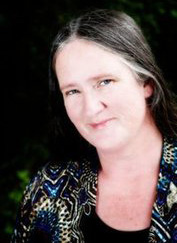
Grace says, “First, write the most spectacular book it’s in you to write...readers might love your social media posts, what they really, really, really want you to do is write the next terrific book. Second, do the advertising, social-ing, and branding that’s authentic to you. You cannot do everything and still protect your writing time. Do the marketing and publicity you enjoy and can stick to without holding your nose. Readers sense when we’re authentic, and authenticity builds a brand on a solid foundation. Third, protect the writing. She who does not write has nothing to publish.”
Part Four: Other Ways to Connect with Potential Readers
Building a website
If you decide that you want to build your own website and host your platform there, then you have a couple of decisions that you need to make. The first one is: where do you want to build your site? You have a number of different options including Squarespace, Wordpress, Blogger and Wix. Wordpress is one of the more popular options as well as Squarespace.
The most important thing, though, when you start to put together your website is that you have a blog feature. Your blog is how you are going to connect with your readers. It is your method of communication.
You are going to use your blog to write about your life, the stories you write, special announcements, and more. Your blog is how your readers are going to understand what your platform is all about; and more importantly, what your book-to-be is all about.
Creating an email list
An email list is where your followers are. These are the people that believe in what you write enough that they want to know more. They are the people who will most likely buy your book, if you cultivate your email list the right way.
Penny says, “I 100 percent urge authors to build their own mailing list. You may have 20,000 followers on Facebook; but if your page gets dumped because of a Facebook glitch or a violation of their TOS, you’re sunk. Build your mailing list early. I’m so glad I did that eighteen years ago when I started this company. It’s a direct line to your audience, a way to speak to readers directly and personally!”
With email lists, it is about quality over quantity. You could have ten thousand people on your list, and only five of them could buy something from you. Or you could have one hundred devoted email subscribers, and all one hundred could buy something. Then they enjoyed your book so much that they go and tell their friends and family, and now you have more subscribers and more sales.
So, how do you accomplish this? Just like a website, you want to choose who will be hosting your emails. Two popular options are Mailchimp and ConvertKit. Websites like these help you build your email lists of subscribers and create email campaigns to send out to them. They also offer different signup forms that you can use on your website to convert people who visit your website to subscribers to your email list.
Now, what kind of emails should you be sending to your list? And how often should you be sending emails? A good rule of thumb is two to three emails a month. You want to stay consistent, but not overbearing. These emails need to consist of any writing-related news you have, whether that’s progress on your book-to-be, new blog posts, or events you’ve attended. As long as it relates to you as a writer, then you are staying consistent with your author platform.
“With an email list, it’s important to stay consistent and not sporadic. You want to build up an email list of readers who enjoy your content and look forward to your newsletter, so choose intervals that you can commit to when deciding how often to send content. The list can later be used to announce a new book or project,” says Cassie.
Podcasts and Vlogs
People sometimes associate a blog with an author platform, but it is so much more than that. Sure, a blog is a very useful tool to put content out in the internet since your book isn’t published yet, but a blog is only a single method.
Some other methods can be more visual, like putting videos on YouTube and starting a podcast.
Joanna Penn from the Creative Penn podcast is a great example of an author who used this type of an alternative platform to grow her following. She started the Creative Penn on YouTube first in 2008. Now, she is an award-nominated, New York Times and USA Today bestselling author. Her platform reaches across three methods: her blog, podcast, and YouTube channel.
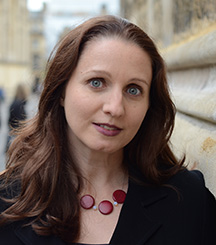
On her podcast, Joanna interviews authors and publishing professionals. She even wrote an entire post on her website about how she started her podcast and how it became so successful, so that other writers could do the same.
As mentioned above, video is also another powerful tool. “Video, in general, is a fabulous way to gain more visibility for your book,” says Penny. “There are so many fun ways to create video now, even on your phone with the video editing apps. But, keep your video short, less than a minute!”
When it comes to building an author platform, the most important part is building one that makes the most sense to who you are and what your book is about. Whether that is focusing on one method or a number of methods. You will find success in what you are able to stay consistent with.
*
Building an author platform isn’t an overnight ordeal. It takes time and effort which is why it’s smart to start before you are even published. Set goals to have your following grow along with your book; let them see the process, and share in the wins and the losses. You’ll end up having a loyal reader base before you even sign a contract.
*

Jenna Faccenda is a Philadelphia native who enjoys writing twisted tales while cuddled up on the couch with her black cat and four-year-old son. Determined to read books for a living, Jenna is the co-founder of Writely Me and the publicity manager for Running Wild Press. Her works have been featured in The Literary Hatchet, and she has a debut chapbook, The Phoenix From the Ashes. Follow her on Twitter @faccenda_jenna.